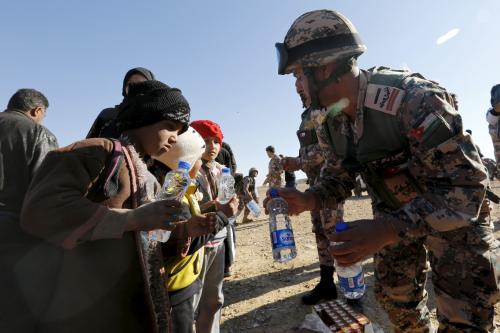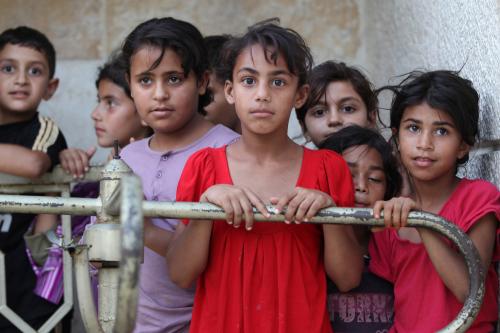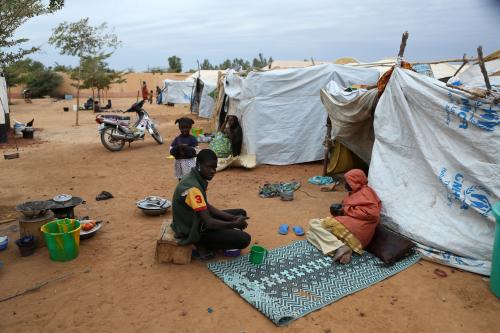Understanding the links between poor people’s income, employment, and health is crucial to reducing poverty. But one other dimension is often overlooked, legal problems.
In a previous blog, I had written about a World Bank research initiative aimed at understanding the relationship between legal problems and the poor. The research looks at three factors: 1) the extent to which the poor are more likely to experience legal problems; 2) how the types of legal problems encountered vary between the poor and non-poor; and 3) the impact of legal problems at individual and household levels.
The initiative began with collection and analysis of data from household surveys on justice needs conducted in Colombia and Jordan. This has helped us better understand the frequency with which legal problems are encountered and the most common types.
The initial findings are as follows:
Extent of legal problems
- In Colombia, poor people were 50 percent more likely than the non-poor (45 percent versus 30 percent) to report at least one legal problem.
- Poor people in Jordan were nearly four times more likely to report a legal problem.
- In both countries, poor men and poor women were more likely than their non-poor counterparts to report problems.
- The likelihood of reporting a problem in each country decreased as the age of the respondent increased.
Types of legal problems
- Being poor in Colombia considerably increased the likelihood of reporting problems related to housing, health, and family relations and moderately increased the likelihood of reporting those involving economic issues, crime, and employment.
- The poor in Jordan were more likely to report civil and criminal problems, but were dramatically more likely to report problems related to family law.
In short, the poor are more likely to experience legal problems, especially certain types. From a development perspective these findings offer some valuable insight. Legal problems are often symptoms of poor policy, inadequate legal and institutional frameworks, and weak delivery of services. The fact that poor people in both countries are considerably more likely to report legal problems suggests they are not well-served by public policies and services. And the financial and physical costs of legal problems can be high, and relatively more so for the poor.
The most common types of legal problems faced by the poor have clear links with different dimensions of poverty, at least suggesting negative impacts on human, economic, and social development. Some legal problems directly hinder anti-poverty policies. For example, the extremely high rate of problems linked with child support payments undermine the objective of such payments, namely to prevent child poverty in the face of financial vulnerability of single-parent households.
Access to health care is important to promote human development, and health crises can easily drive vulnerable people into poverty due to unexpected expenditures or loss of income. Yet two of the most common types of legal problems faced by poor Colombians are enrollment in health care systems and provision of health services. Family law problems, faced by the poor in both countries, may involve access to financial transfers, such as alimony and child support payments or division of marital assets. Poor women, with weaker economic and labor force participation, are particularly reliant on such assets.
In Jordan, the poor and near poor households accounted for a large majority of those reporting certain legal problems. Most of these problems have clear links with dimensions of poverty, including access to economic assets (inheritance, marital assets), income (alimony/child support, labor disputes), and housing (landlord-tenant disputes), as well as those that would have negative health impacts (domestic violence, assault).
The survey data also offer us a glimpse of other types of exclusion. In Colombia, disabled people (57 percent) were much more likely to report legal problems than the non-poor (30 percent), and nearly one-third of the disabled reported suffering discrimination based on their disability. The extreme poor were considerably more likely to report dissatisfaction with court and administrative services. In Jordan, women were much less likely to bring civil and criminal legal problems to court, often due to restrictive social norms.
What the surveys lack is data on the impacts of legal problems. A growing number of household surveys, mostly from upper-income countries, are providing evidence of impacts on issues such as health, employment, and family relations. More recent surveys in Canada and Australia are two good examples. The frequency with which the poor experience legal problems, and the links between those types of problems and dimensions of poverty, at the very least suggest they undermine development and poverty alleviation measures. Understanding this impact is the focus of the next phase of research.







Commentary
Poor people and the law
December 6, 2016